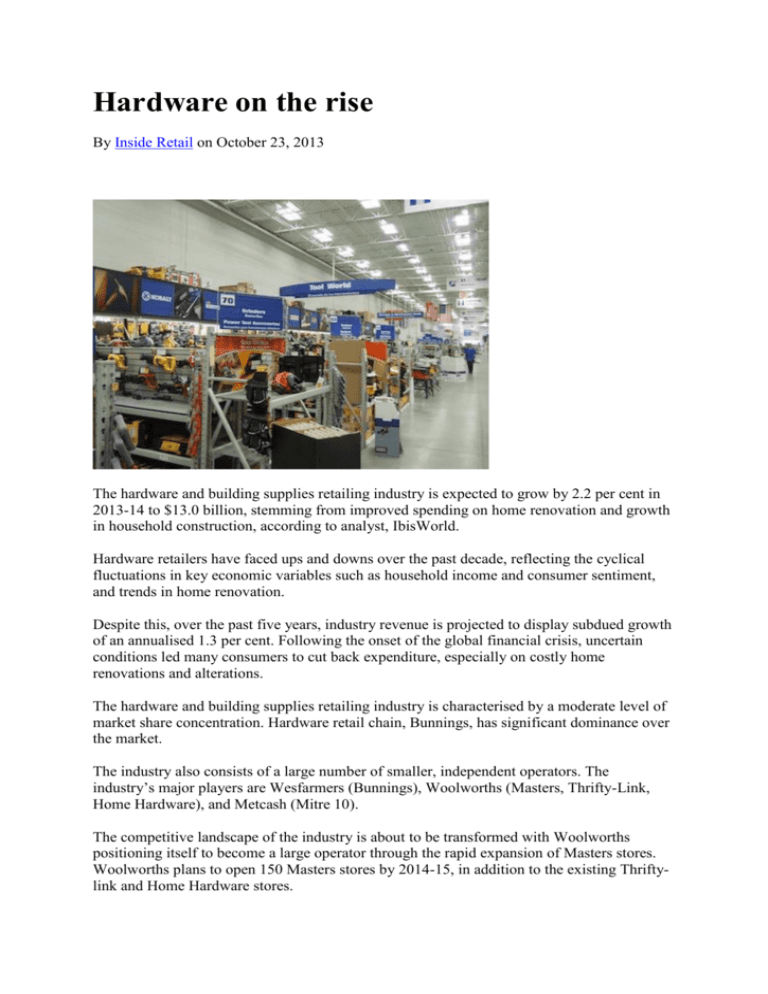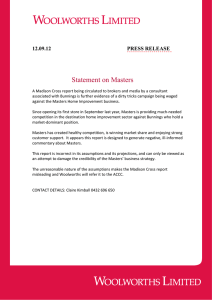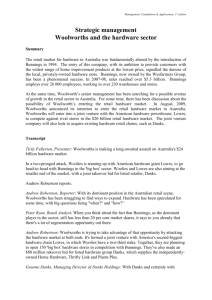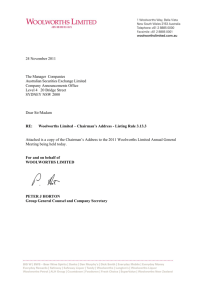Inside Retail Hardware on the Rise
advertisement

Hardware on the rise By Inside Retail on October 23, 2013 The hardware and building supplies retailing industry is expected to grow by 2.2 per cent in 2013-14 to $13.0 billion, stemming from improved spending on home renovation and growth in household construction, according to analyst, IbisWorld. Hardware retailers have faced ups and downs over the past decade, reflecting the cyclical fluctuations in key economic variables such as household income and consumer sentiment, and trends in home renovation. Despite this, over the past five years, industry revenue is projected to display subdued growth of an annualised 1.3 per cent. Following the onset of the global financial crisis, uncertain conditions led many consumers to cut back expenditure, especially on costly home renovations and alterations. The hardware and building supplies retailing industry is characterised by a moderate level of market share concentration. Hardware retail chain, Bunnings, has significant dominance over the market. The industry also consists of a large number of smaller, independent operators. The industry’s major players are Wesfarmers (Bunnings), Woolworths (Masters, Thrifty-Link, Home Hardware), and Metcash (Mitre 10). The competitive landscape of the industry is about to be transformed with Woolworths positioning itself to become a large operator through the rapid expansion of Masters stores. Woolworths plans to open 150 Masters stores by 2014-15, in addition to the existing Thriftylink and Home Hardware stores. In comparison, Bunnings operates 277 stores and is planning to open a further 18 stores over the next couple of years to protect is position in the market. The rapid rollout of Masters stores and the expansion of Bunnings will result in industry concentration increasing significantly over the next five years. The industry is forecast to record solid growth over the next five years, reflecting the stronger demand conditions in the household renovation market and buoyant trends in household disposable income and consumption. Competitive pressures are expected to weigh on profitability in the short term. The size of the industry should grow steadily as Bunnings spreads its network and Masters attracts customers from other specialist hardware industries. IbisWorld industry analyst, Anthony Kelly, says:“Despite constrained growth, the industry has captured a greater share of the total building supplies market by bypassing wholesalers and sourcing products direct from manufacturers and importers, thereby encouraging trade customers to deal directly with retailers”. Popular television shows such as The Block and House Rules have given many Australians an appetite for renovation, with a huge DIY boom underway. “Uncertainty in the property market has created a disincentive to purchase new dwellings, and therefore many homeowners prefer to renovate in order to improve their quality of living and to boost the value of their home,” Kelly said.











